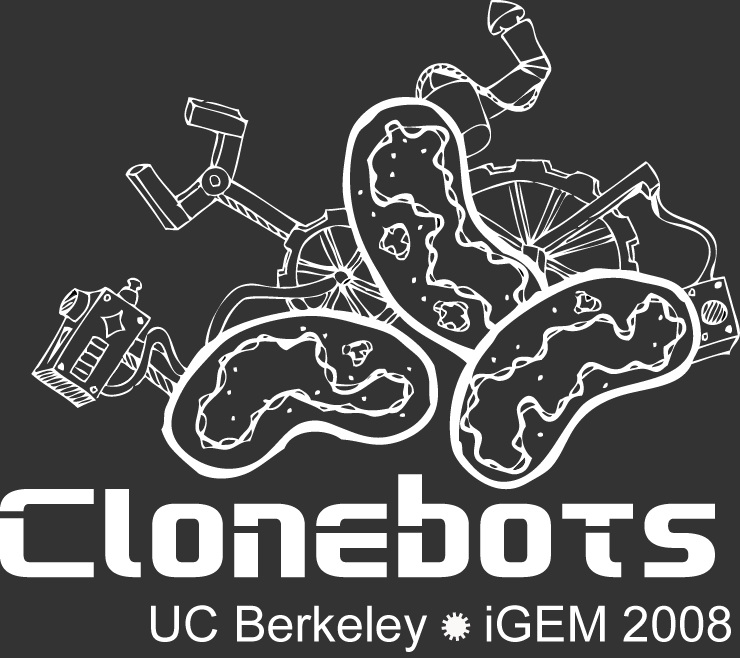Team:UC Berkeley
From 2008.igem.org
(Difference between revisions)
| Line 4: | Line 4: | ||
[[Image:UCB_title3.jpg]] | [[Image:UCB_title3.jpg]] | ||
| + | |||
| + | <!-- | ||
| + | <html> | ||
| + | <div id="Menu"> | ||
| + | <a>Home</a><br /> | ||
| + | <a href="https://2008.igem.org/Team:UC_Berkeley/ProjectOverview" title="Project overview">Project Overview</a><br /> | ||
| + | <a href="https://2008.igem.org/Team:UC_Berkeley/Modeling" title="Modeling of the lysis device">Modeling</a><br /> | ||
| + | <a href="https://2008.igem.org/Team:UC_Berkeley/Notebook" title="Day to day notes">Notebook</a><br /> | ||
| + | <a href="https://2008.igem.org/Team:UC_Berkeley/Team" title="Our team!">The Team</a><br /> | ||
| + | </div> | ||
| + | </html> | ||
| + | --> | ||
| + | |||
{| | {| | ||
|- | |- | ||
Revision as of 06:36, 8 October 2008
| Our project, dubbed Lysophonix, is centered around the creation of composite parts that will cause E. coli to lyse in response to a sound stimulus. We hope to demonstrate the utility of this sound lysis device in three distinct applications: protein purification, the Gateway reaction, and composite part assembly. Current methods of protein purification abrasively disrupt the bacterial membrane, often damaging or destroying the protein of interest. We seek to show that our device can be used as a gentler alternative to release proteins from E. coli. The other two applications, the Gateway and Assembly reactions, involve passing a specific genetic sequence, often called a "part," from one plasmid to another. These processes generally require the isolation of both plasmids of interest from the E. coli in which they are amplified and the addition of somewhat costly reagents. In each case, we propose bringing together two bacterial cultures, each containing our sound lysis device and one of the necessary plasmids, that together produce all of the reagents required for the reaction. When a sound stimulus is applied, the bacteria release the plasmids and reagents into the surrounding solution and the desired reaction ensues. This promises to both simplify and reduce the costs for Gateway and Assembly reactions. |
|
 "
"
